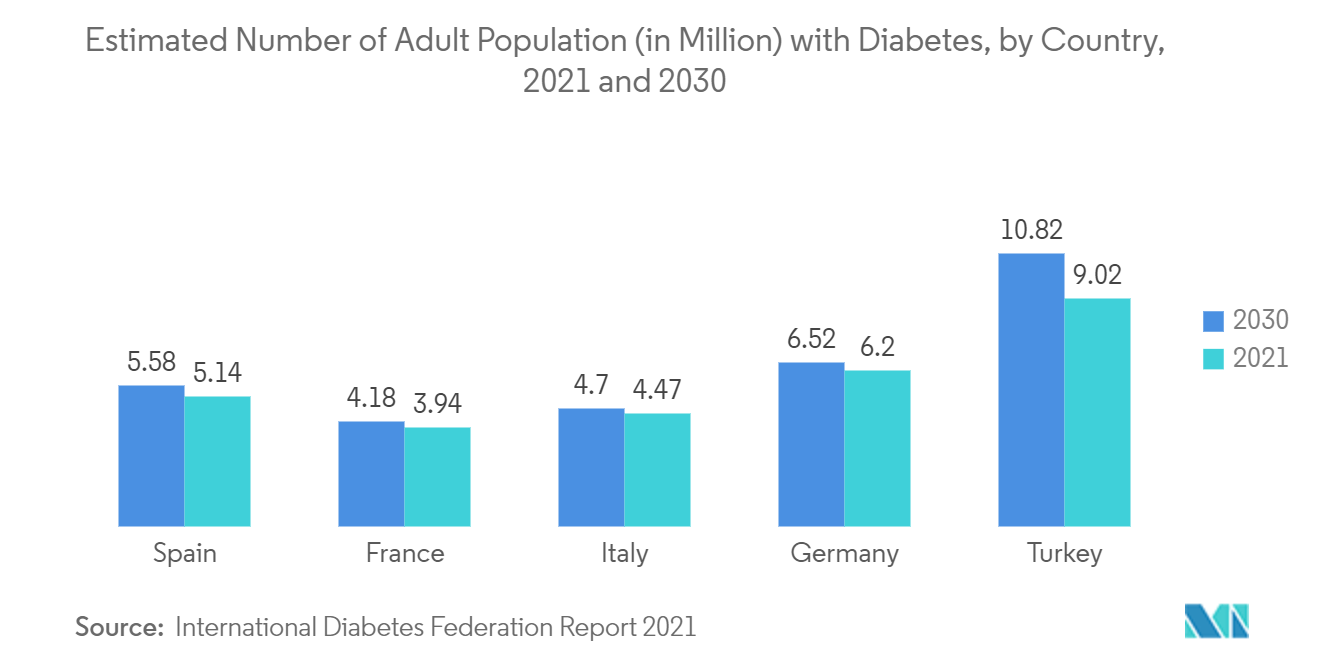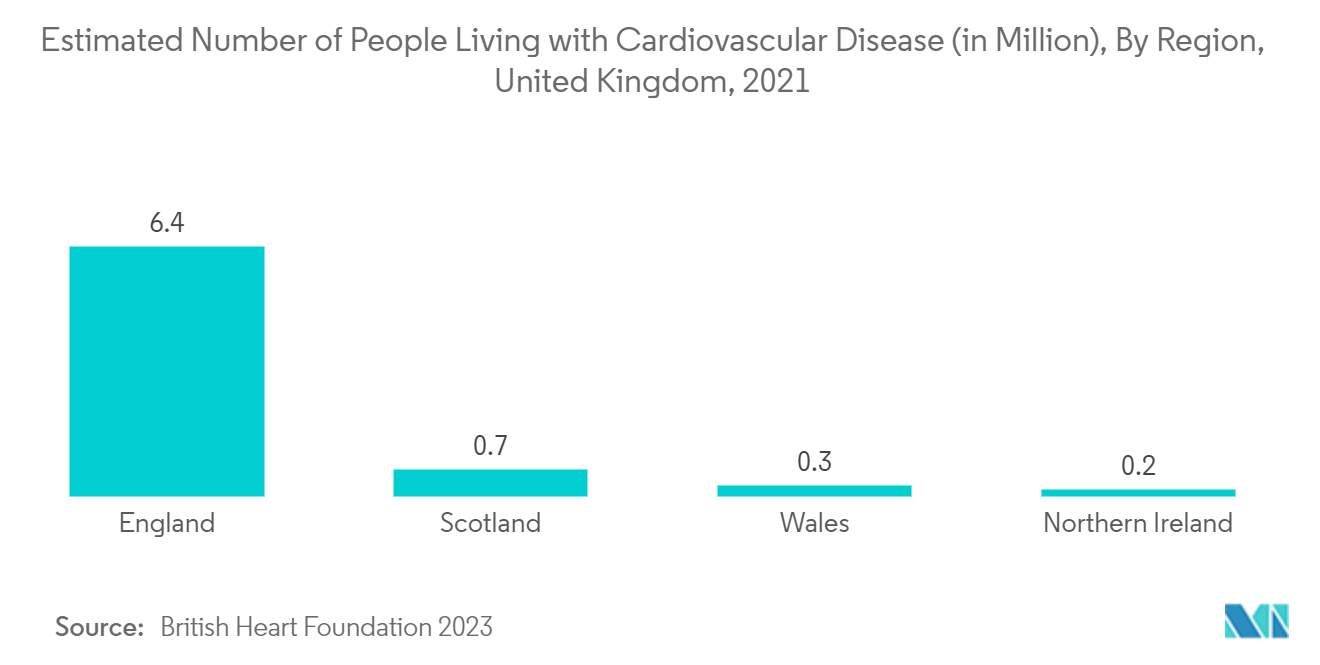Market Trends of Europe In-Vitro Diagnostics Industry
The Instrument Segment is Expected to Hold a Major Share in the Market
In-vitro diagnostics (IVD) instruments are medical devices used to perform tests to detect diseases and infections by examining specimens of bodily substances, such as urine, blood, tissues, and stool. The instrument segment encompasses the apparatus or devices, such as targeted gene sequencing devices, clinical chemistry analyzers, immunology analyzers, and others, which are used alone or in combination, and are intended by the manufacturer for the in-vitro examination of specimens derived from the human body.
Some of the standard IVD instruments include coagulation test systems, blood sugar monitoring systems, slide processing systems, cell imaging & analysis systems, and PCR testing platforms like the Abbott m2000 RealTime System. One of the primary growth drivers of IVD instruments is the increasing application of multi-test media during the diagnostics procedure. In-vitro diagnostic testing can detect multiple markers simultaneously by integrating multi-test platforms. This is particularly advantageous when screening for the presence of drugs in a patient. In addition, the rising acceptance of routine diagnostics among the general population after the pandemic hit is also likely to drive the growth of the instrument segment of the market in Europe over the forecast period.
In addition, the increasing number of diagnostic testing centers in Europe is resulting in higher demand for in-vitro diagnostic instruments, resulting in segmental growth. For instance, according to the Government of the United Kingdom's April 2022 update, about GBP 36 billion will be invested in the health and social care systems over the next three years. Further, per the same source, under the investment initiatives, about 160 community diagnostic centers will be established in England by 2025, of which 73 are already operational. Hence, with the new investments for establishing or expanding diagnostic centers, the demand for IVD instruments is expected to increase in the region.
Additionally, introducing advanced instruments by the major players in Europe supports the higher adoption rate of advanced instrument among healthcare professionals for precisely detecting symptoms associated with several disorders. For instance, in May 2022, Gradientech received the CE-IVD approval for its QuickMIC system to offer ultrarapid antibiotic susceptibility testing for sepsis due to infectious diseases.
Hence, the wide application of in-vitro diagnostic instruments, an increasing number of diagnostic centers, and the introduction of advanced instrument fuel the segment's growth in Europe.

United Kingdom is Expected to have Significant Market Share over the Forecast Period
The in-vitro diagnostics market in the United Kingdom is expected to grow due to the increase in point-of-care (POC) diagnostics tests and the rising prevalence of different chronic diseases in the country. For instance, according to a report updated by Macmillan Cancer Support in October 2022, it was estimated that the number of new cancer cases will reach 3.5 million by 2025 and increase to 4 million by 2030 in the United Kingdom.
Also, according to the International Diabetes Federation (IDF), the number of people diagnosed with diabetes was 3.99 million in 2021, which is anticipated to reach up to 4.14 million by 2030 in the United Kingdom. Thus, the higher prevalence rate of chronic disorders is augmenting the adoption rate of in-vitro diagnostics devices for early diagnosis and supporting market growth.
Furthermore, the healthcare infrastructure development in the United Kingdom is poised to contribute significantly to the country's growth in the overall market. For instance, according to an article by the Department of Health and Social Care in 2022, the New Hospital Programme in the United Kingdom will set up 48 new hospitals by 2030. Additionally, the hospital is the primary user of in-vitro devices and is expected to have a significant impact on the demand for in-vitro diagnostics products in the united kingdom
Additionally, the rising geriatric population in the United Kingdom will increase the burden of chronic and infectious diseases, as they are more prone to infections and age-related diseases due to low immunogenicity. For instance, according to data from The World Bank, the population of 65 years and over was almost 12.7 million in 2021, an increase of 1.4% compared to the previous year. This is further anticipated to increase the demand and adoption of IVD devices and is expected to drive the growth of the in-vitro diagnostics market in the country shortly.
Thus, the increasing prevalence of chronic diseases, rising investment for advancing healthcare infrastructure, and growing geriatric population in the United Kingdom are anticipated to increase the demand and adoption of IVD devices and foster market growth.


